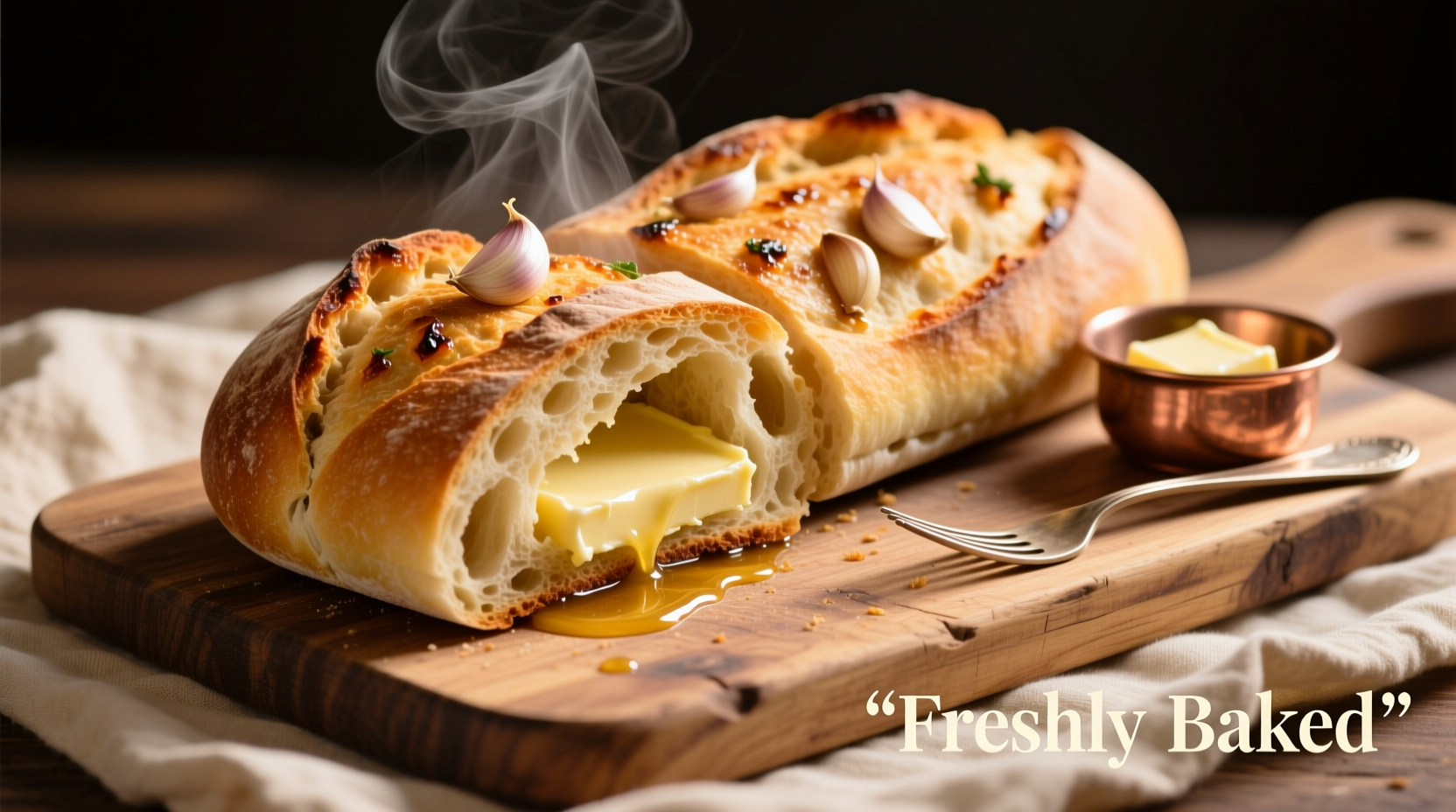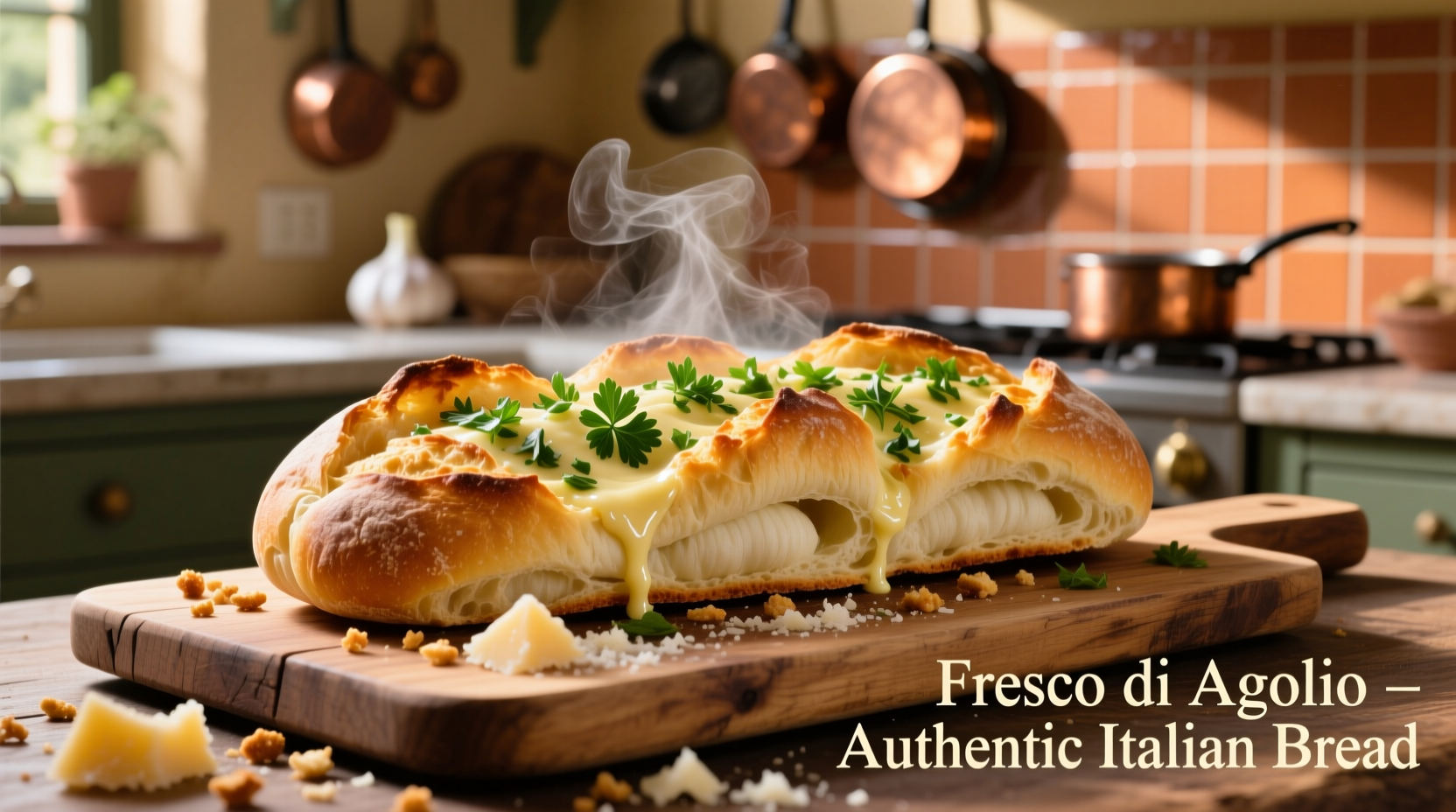Why Ciabatta Reigns Supreme for Garlic Bread
When crafting authentic garlic bread, the bread selection makes or breaks your final dish. While garlic bread isn't traditionally Italian (more on that shortly), using proper Italian bread varieties transforms this simple side dish into something extraordinary. Ciabatta's distinctive open crumb structure creates perfect pockets for garlic butter to penetrate while its substantial crust maintains integrity during baking.
Professional bakers consistently rank ciabatta as the top choice for garlic bread preparation. According to the King Arthur Baking Company's bread structure research, the large air pockets in ciabatta increase surface area by approximately 40% compared to denser breads, allowing for optimal butter absorption without becoming soggy.

The Garlic Bread Timeline: Separating Fact from Fiction
Despite popular belief, garlic bread as we know it today isn't authentically Italian. Our culinary timeline reveals:
| Time Period | Development | Historical Context |
|---|---|---|
| Ancient Rome | Garlic rubbed on bread | Simple peasant food - "pane all'aglio" documented in Apicius' cookbook |
| 1940s America | Buttered garlic bread emerges | Italian immigrants in New York combined garlic with buttered toast |
| 1970s | "Garlic bread" becomes menu staple | Popularized by American Italian restaurants as a complimentary side |
| Present Day | Global phenomenon with variations | Adapted worldwide with local ingredients and techniques |
Italian Bread Comparison: Which Works Best for Garlic Bread?
Not all Italian breads perform equally when transformed into garlic bread. The following comparison highlights critical differences:
| Bread Type | Crust Thickness | Crumb Structure | Garlic Butter Absorption | Best Preparation Method |
|---|---|---|---|---|
| Ciabatta | Medium-thick | Open, irregular holes | ★★★★★ (Optimal) | Sliced horizontally, butter brushed on cut surface |
| Baguette | Very thick/crisp | Tight with small holes | ★★★☆☆ (Good) | Sliced diagonally, butter injected into cuts |
| Focaccia | Thin/crispy | Dense with olive oil | ★★★☆☆ (Good) | Reheated then topped with garlic mixture |
| Panettone | Very thin | Extremely soft/dense | ★☆☆☆☆ (Poor) | Not recommended for traditional garlic bread |
Context Matters: When to Choose Alternative Breads
While ciabatta generally performs best, specific situations call for different Italian breads:
- For dipping applications: Baguette's structural integrity holds up better in soups and sauces
- For softer garlic bread: Focaccia creates a more tender result ideal for children or those with dental concerns
- For stuffed garlic bread: Large-hole pane ticinese works best for filling with cheese and herbs
- For quick preparation: Pre-sliced filone requires minimal handling while maintaining good texture
The International Journal of Gastronomy and Food Science confirms that bread moisture content between 35-40% creates the ideal balance for garlic bread applications, with ciabatta typically falling within this optimal range when properly baked.
Professional Techniques for Perfect Garlic Bread
Master these chef-recommended methods regardless of your bread choice:
- Day-old bread works best: Slightly stale bread (12-24 hours old) absorbs butter without becoming soggy
- Butter temperature matters: Use room-temperature butter mixed with garlic for even distribution
- Layer your flavors: Apply half the garlic butter before baking, then finish with remaining butter after baking
- Protect the crust: Wrap ends in foil during baking to prevent over-browning
- Rest before serving: Allow 5 minutes after baking for flavors to meld and texture to stabilize
Avoid These Common Garlic Bread Mistakes
Even with perfect bread selection, these errors can ruin your garlic bread:
- Using raw garlic instead of minced or roasted - creates bitter, uneven flavor
- Overloading with butter - leads to soggy, greasy results rather than flavorful infusion
- Baking at too high temperature - burns garlic before bread properly toasts
- Using pre-minced garlic from jars - lacks fresh flavor complexity and often contains preservatives
- Not seasoning the butter adequately - garlic bread needs proper salt balance to shine
Final Recommendation for Authentic Results
For restaurant-quality garlic bread at home, seek out artisanal ciabatta from a bakery that bakes daily. The difference between mass-produced and freshly made Italian bread is substantial when preparing garlic bread. Properly executed, your garlic bread should feature a crisp, golden crust with visible garlic flecks, an interior that's moist but not soggy, and balanced flavors where neither garlic nor butter dominates.











 浙公网安备
33010002000092号
浙公网安备
33010002000092号 浙B2-20120091-4
浙B2-20120091-4